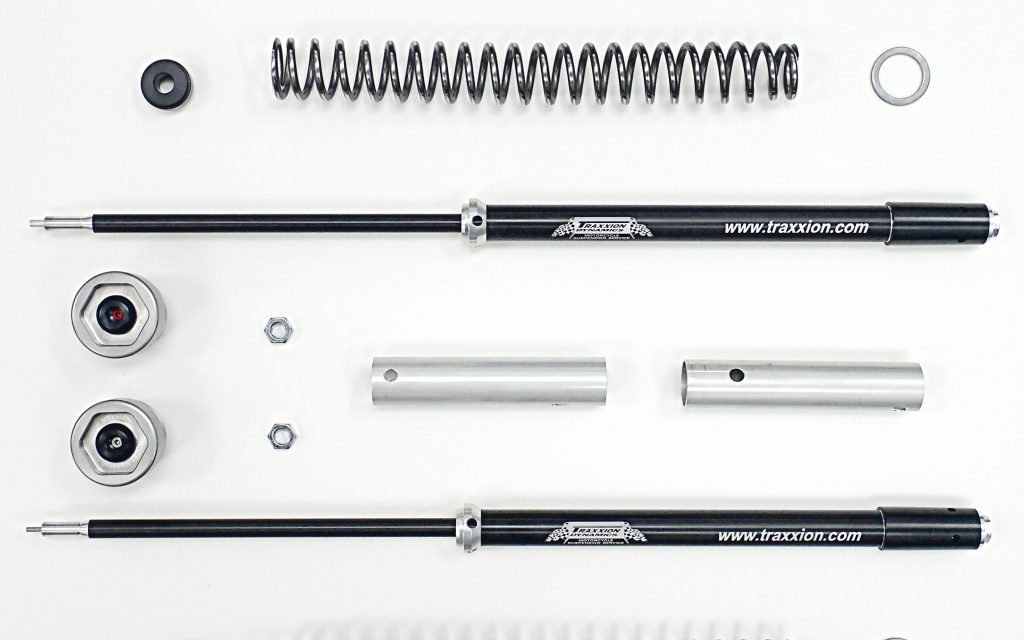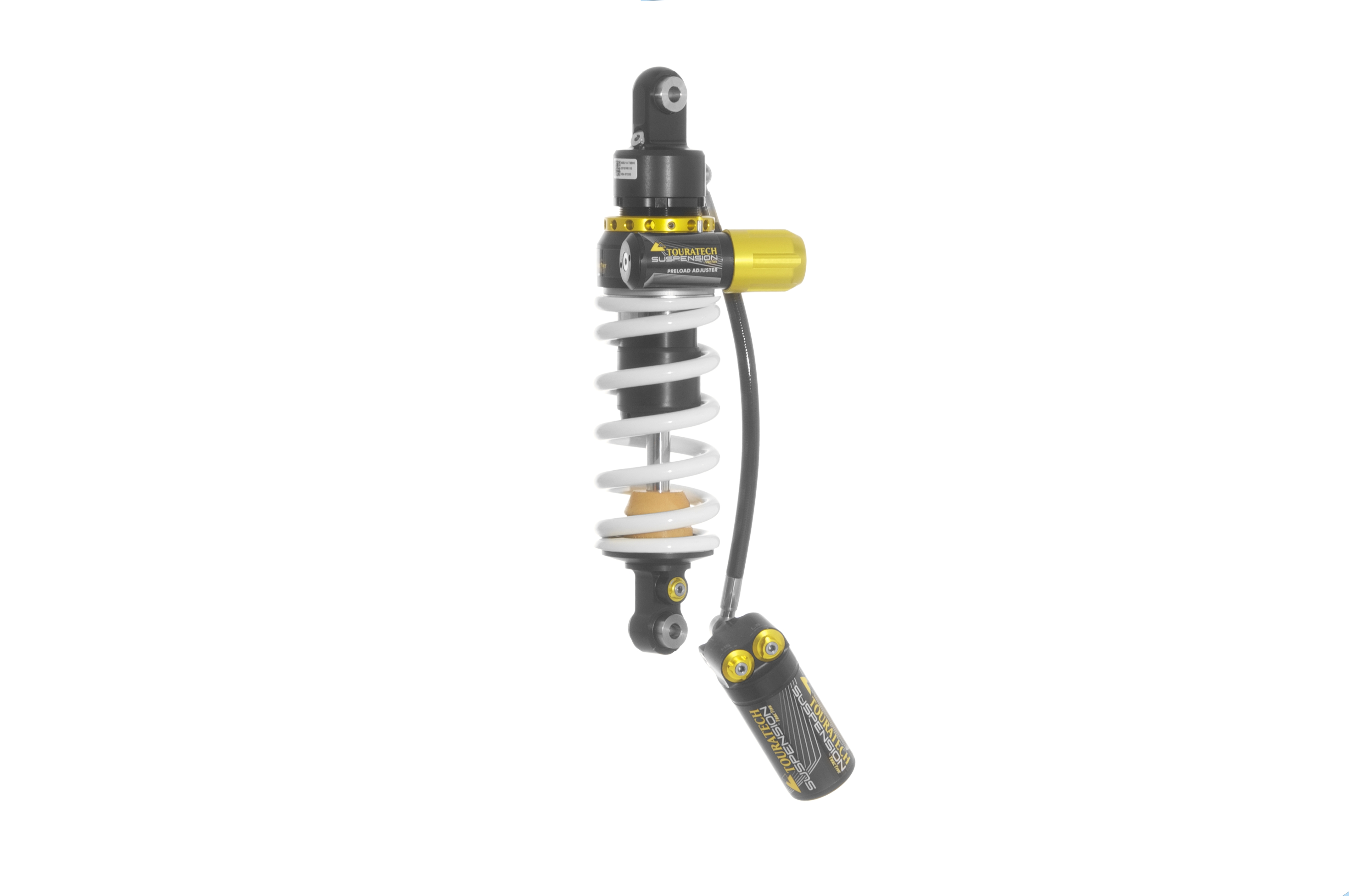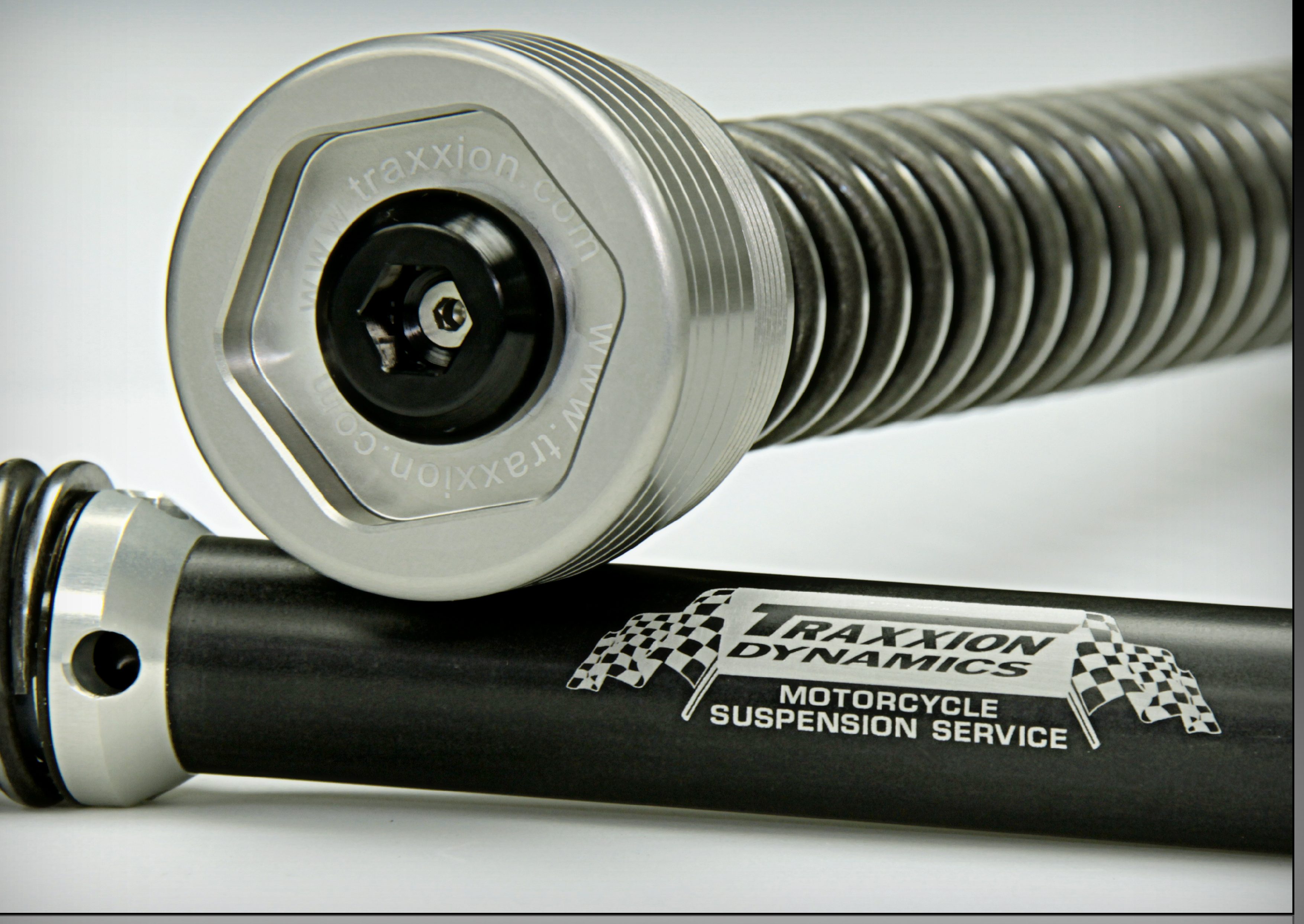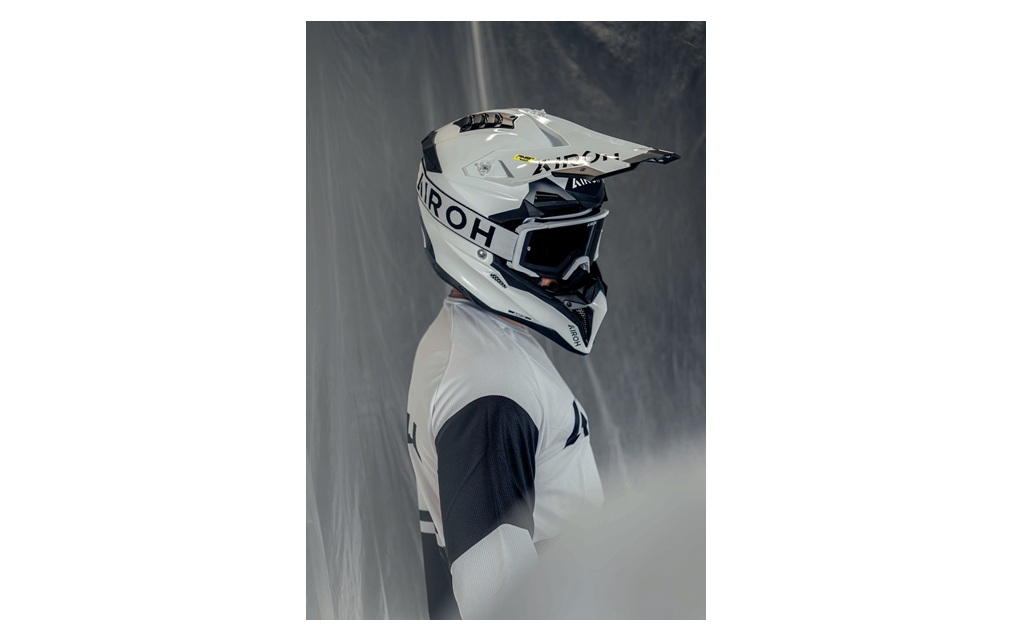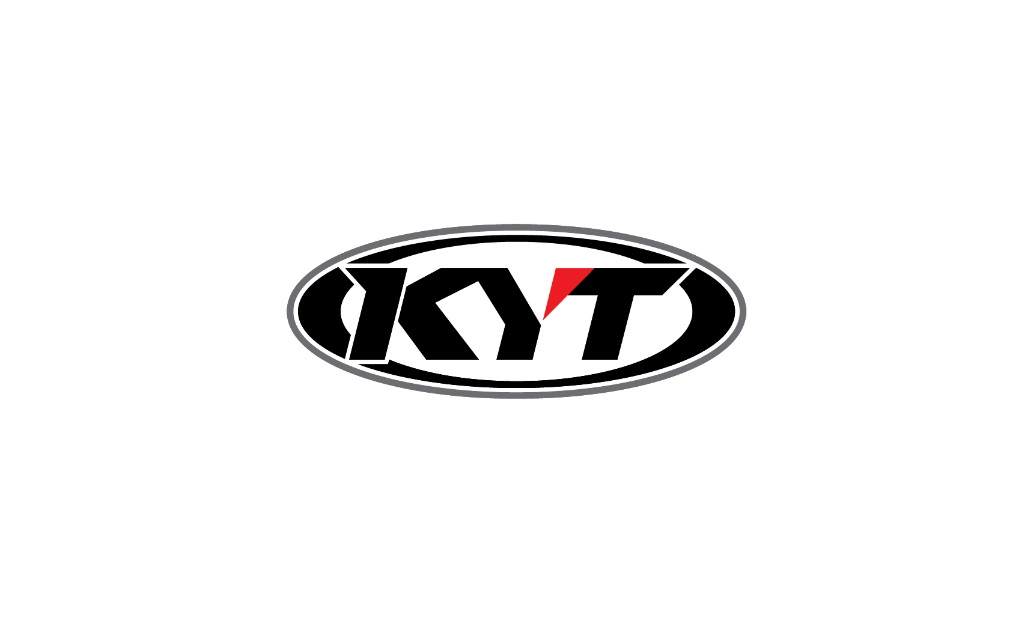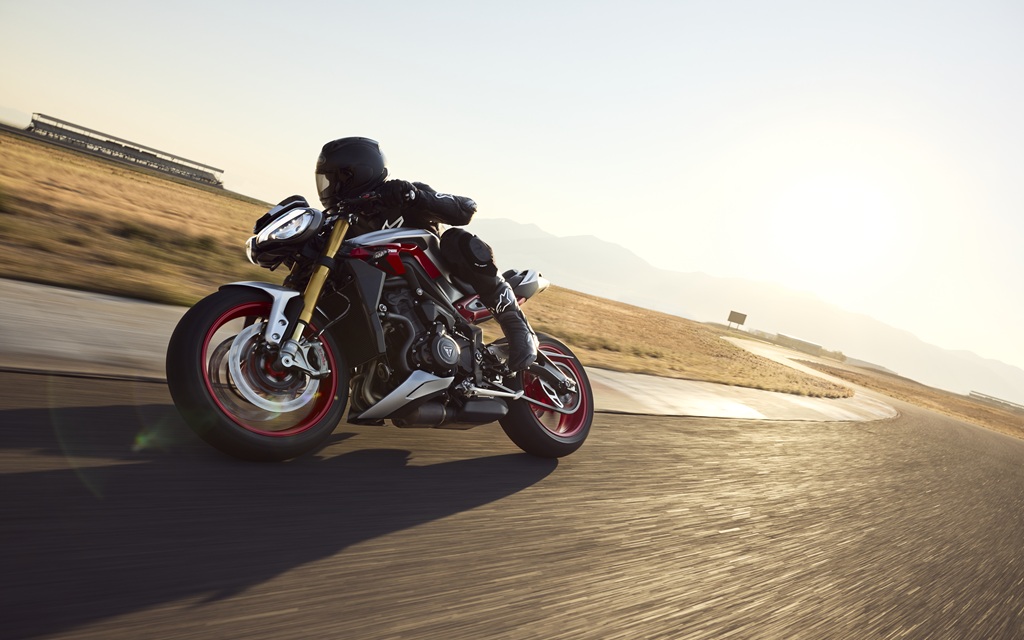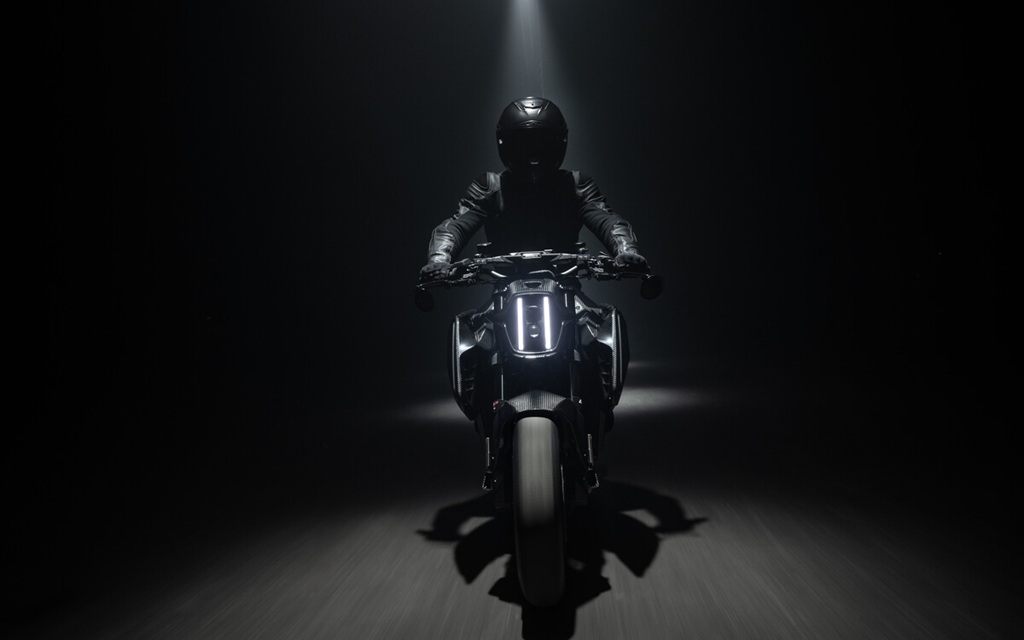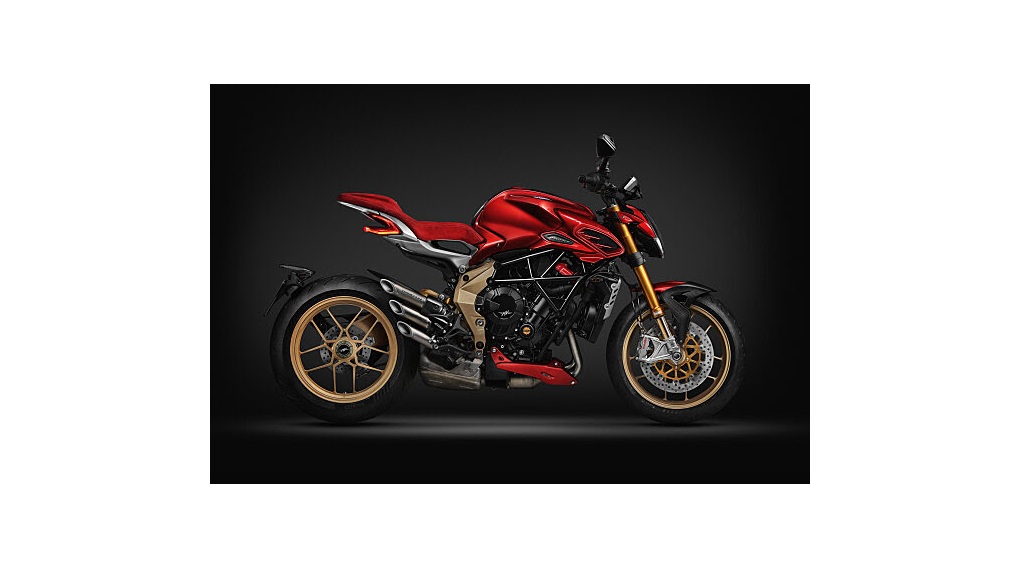How to fix Quebec’s pothole situation
You would think that, by now, motorcycle manufacturers would have this suspension thing down pat. After all, the telescopic fork has been around in various guises since the mid-’30s, and monoshock rear suspension, relatively new by comparison, is still a mature technology. But no, motorcycle makers continue to find new and inventive ways to render spring rate and damping forces ill-suited for motorcycle and their intended riders. For every Kawasaki H2 SX SE — the best calibrated suspension I’ve tested recently, perhaps ever — there’s a Yamaha MT-10, a Kawasaki Versys or the guinea pig for this product review, Suzuki’s V-Strom 1000.
Sometimes, they just get the calibration wrong. Some manufacturers — the Japanese marques seem particularly prone to this — will mix princess-and-the-pea soft springing with positively overly enthusiastic damping. The result is the worst of both worlds; wallowy handling at speed because the bike flounces around on its wimpy springs and a wickedly harsh ride because as soon as you hit a bump big enough to overwhelm those soft springs, that Herculean compression damping locks up the front fork or rear shock.
Other times, the basic setup will be pretty darned close to ideal but the plot is let down by budget componentry. Damper rod front forks, for instance, are a prime — though hardly the only — example of a Cheap Charlie technology guaranteed to disappoint; even if the springing and low-speed compression damping are well calibrated, their inferior design means that compression damping is going to be harsh. Talk to the experts and you’ll quickly learn that motorcycle manufacturers have pretty much found every possible way to screw up suspension systems.
Interestingly, Suzuki’s V-Strom 1000, again the subject of this suspension transplant, has suffered both maladies in its 18 years extant. The original model — circa 2002 to 2010 — actually had an adequate fork. Unfortunately, it also had comically soft springs compensated by, you guessed it, wickedly firm compression damping. Owners, including Yours Truly, have chased all manner of solutions, mostly in the form of Race Tech Gold Valves and stiffer springs (one of the truly difficult anomalies of suspension tuning for we luddites to get our minds around is that, for many bikes, the road to a more compliant ride often starts with a stiffer spring).
Second gen DL1000s — again, this issue’s guinea pig — suffer the exact opposite issue. The standard suspension is quite well calibrated. The stock 0.75/0.95 kg/mm fork spring and the shock’s 540 pound per inch rate — pardon the mixing of measurement systems, but many, if not most, suspension tuners really do mix their imperial and metric nomenclature front to rear — are completely appropriate for the average 80 kilogram rider. Even the compression damping (low speed at least) isn’t far off. Unfortunately, the hard bits, shock and fork alike, are — I’ll use our other official language to convey my disappointment without too much offense — a morceau de merde.
What’s that you say, Dave? I’m pretty sure I saw compression and rebound damping adjusters on the new Suzuki’s front fork and the rear shock has a hydraulic preload adjuster and rebound damping. Sounds pretty sophisticated to me.
Unfortunately, like so many things in life, said sophistication is only skin deep. Delve deeper — as in taking them apart — and the front fork’s inner workings are pretty crude, barely above the quality of a damper rod design. Those damping adjusters? Twiddle the adjusters all you want, they barely make any difference, the range offered by the front fork’s compression knob — the lower one down near the front calipers — almost imperceptible even when you click through its full range. The rear shock, meanwhile, uses most of its available preload just to accommodate the rider. In the end, the whole plot works pretty darned well as long as you’re fairly light, always ride alone and the roads oft travelled are fairly smooth. Load a new V-Strom up with passenger and luggage or play amongst the potholes and Suzuki’s decision to cut costs becomes rapidly apparent. Worse yet, because of Suzuki’s aforementioned frugality, the fixes don’t come particularly easy or cheap.
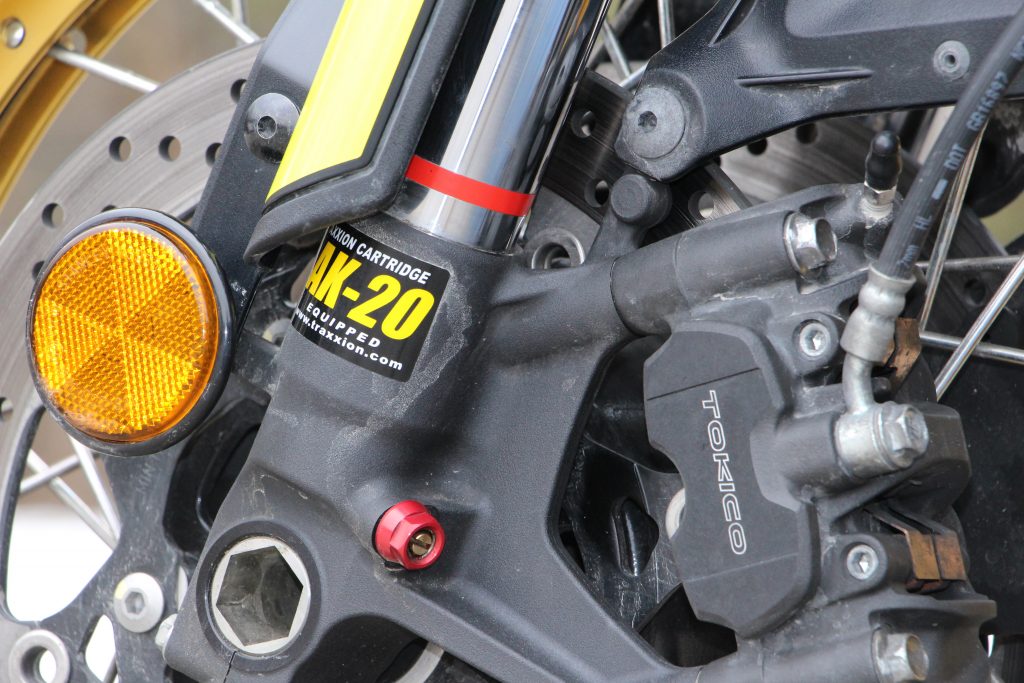
Traxxion Dynamics AK-20 fork cartridge
Judging from online research, the first thing most motorcyclists do when confronted with the need for revised fork tuning is to call up Race Tech, they of the replacement Gold Valve. That’s mainly because, one suspects, it’s cheaper to replace shims and pistons than entire cartridges.
Unfortunately, I have not had good experiences with the California-based tuner, its recommended tuning so firm that my old V-Strom’s front fork has been apart three times so far as I search for just the right combination of shims and oil that will keep front wheel on tarmac without pounding my arms into jello. Factor in the cost, not to mention downtime, of all those fork dismantlings and suddenly the lower initial outlay doesn’t look quite so attractive. Judging from online forums, precious few are the V-Strom owners, for instance, who got their Race Tech-altered fork working right in first installation. Besides, if I wanted to learn all about shim stacking — that’s how you adjust a Gold Valve — I would have gone into the suspension tuning business.
The exact opposite is true of my experience with Traxxion Dynamics’ AK-20 replacement fork cartridge. It’s as turnkey as completely replacing your suspension internals can be. Quite literally, Traxxion supplies everything — damping cartridge springs tailored to your weight, new damping adjusters, two quarts of the appropriate fork oil and even a few special tools you’ll need during installation — required for a complete overhaul of your front suspension. Even the instructions are comprehensive and many DIYers really do install the system all by their lonesome.
More ham-handed than handy, I had John Sharrard of Accelerated Technologies fettle my forks, but the one thing that was obvious, even from just observing the installation, was that each of Traxxion’s AK-20 cartridges really is customized for the specific application. The cartridge length was about the same, the compression damping piston/shim stack accommodated the Suzuki’s oddball construction and the tools supplied allowed the installation of Traxxion’s unique fork caps. Indeed, the whole thing was strictly drop-in, no machining of fork or modification of parts required.
More importantly, the basic setup for both springing and damping was pretty darned close to spot on. Traxxion’s Dan Anderson determined that my weight (roughly 80 kilograms) required a 0.90 kg/mm spring. (One thing almost universal to aftermarket fork kits is that suspension tuners prefer single rate springs over the stocker’s typically dual rate affairs because it allows them to set damping, most crucially rebound, for one specific tension). Indeed, so precisely does Traxxion set up your baseline suspension that my final preload setting was only two millimetres off their recommendation and Sharrard never felt the need to disturb the standard rebound setting at all.
The improvement in the ride was pretty impressive. Oh, the slightly stiffer springing means the initial reaction to small bumps is a little more distinct, but otherwise the AK-20 really does sweeten the front end. Thanks to the stiffer initial spring rate, there’s less brake dive and the superior low-speed compression damping results in less unwanted movement in hard cornering. Rebound is more tightly controlled as well.
But the really big improvement is over bigger bumps. Where the stock Suzuki fork was quite harsh in high-speed compression — the stock compression valve is some weird amalgam of damper rod and piston design that is not terribly effective — the Traxxion Dynamics shim stack provided all the digressive damping required. Anyone wondering why someone would spend U$1,099.95 — the price for the AK-20 kit — just needs to enjoy a single ride over a severely potholed road to justify the expenditure. What used to rattle fairing bits and rider alike now passes under wheel largely unnoticed. Testing after we buttoned up the project, I was left wondering where all the rough roads went.
The one fly in the ointment is adjusting the compression damping. When Traxxion supplies AK-20s to replace non-adjustable stock forks, it uses the right fork leg for rebound adjustment and the left for compression, both adjusters using screws at the top of each fork leg. However, because the V-Strom comes standard with compression damping adjustability, Traxxion uses both fork tops for rebound adjustment and retains the stock compression bleed.
Unfortunately, as I alluded at the beginning, the stock compression adjusters were nigh on useless. Pushing on the fork with the springs removed, it was almost impossible to tell the difference in the compression circuit with both adjuster screws fully open or in closed positions. In other words, any benefit I thought I was getting from twiddling with the stock adjuster was more psychological than real.
Luckily, Sharrard determined that an aftermarket valve from K-Tech — part number KTK20K-FCV-KYB3, originally designed for certain Triumph, Kawasaki and Yamaha sportbikes that also use Kayaba forks — bolted right in. Presto! Every click of adjustment made a discernible difference. The only downside is that the K-tech adjusters do cost $185.
I am not sure if this malady afflicts other marques. I do know that, if you’re taking the time to replace the entire damping cartridge, it does bear testing; forking over that much money to improve your suspension and still not having adjustability seems like a job half done. As for 2014 to 2019 Suzuki DL1000 owners, Traxxion is aware of the situation and is looking into a solution. Otherwise, the entire transplant was a grand success, easily installed and quite effective at fixing the stock Suzuki’s ills.
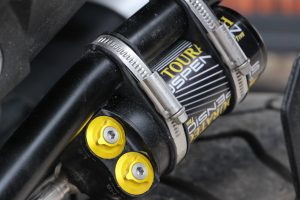
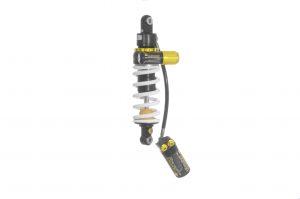
Touratech Typ High End Shock
Now, first off, the 2018 V-Strom’s standard shock is not nearly as horrible as the first gen’s abomination. The spring rate is adequate for a single rider and, though it could use a tad more compression damping, it’s more than passable for solo riding.
Throw a passenger into the mix, however, and its limitations quickly become apparent. The preload adjustability — it’s hydraulically actuated at least — is not nearly enough to compensate for the extra weight. The damping, barely adequate for just the rider, is quite out of its element when fully loaded. The first time I took Herself for a tour, we didn’t get but 400 metres from her house — mind you, she lives in rural Quebec where the roads are particularly poorly attended — before she declared she absolutely hated the suspension. Indeed, you know there’s something truly wrong with your suspension when your wife offers to buy you a new shock!
The shock I — OK, we — chose was Touratech’s Typ High-End shock (if you happen to be looking at Touratech USA’s website, it’s called “Expedition”), a remote reservoir affair with high- and low-speed compression damping adjustability as well as rebound variability and a built-in hydraulic preload adjuster. This last was one of the main reasons for choosing the Touratech as the High-End has 15 millimetres (65 klicks!) of adjustment, significantly more than the eight or 10 mm common to most high-end shocks. With more preload adjustability, I was able to opt for a softer spring and still accommodate She Who Must Be Obeyed and all her (absolutely necessary!) ablution products. Indeed, the spring Touratech supplied was exactly the same rate — 540 lb./in. or 95 N/mm — as the stocker. For riders heavier than 100 kilos, there’s a 570 lb/in or 100 N/mm option, but that’s the heaviest the company offers, that softness possible, again, because of the incredible range of preload available.
What is changed — and dramatically — is the damping. Almost perfectly set up directly from the factory — Touratech, like Traxxion, custom tailors the shim stack to your weight and intended use — I softened the high-speed compression damping two clicks and left the low-speed and rebound as supplied. As with Traxxion, the more familiar the supplier is with your particular bike, the more likely your shock will be a bolt-on affair.
In fact, the only real adjustment required was to the aforementioned preload. On most aftermarket shocks, hydraulic adjusters are bolt-on affairs that are added to the standard mechanical adjuster. In other words, the factory sets up the shock’s static preload as per its calculations for your weight and then adds the hydraulic mechanism to accommodate the adjustability you require for adding passengers and the like. Because every shock setup is a guess — yes, people lie about their weight, even to their shock tuners — they have to account for riders both heavier and lighter than promised. To compensate, they choose a base preload setting that can accommodate both lighter and heavier riders.
In Touratech’s case, they actually set up the static preload 5 mm softer than calculated just in case the rider really is lighter. Yes, that means the shock arrives with 5 mm of hydraulic preload already built in for your weight, only leaving 10 mm of hydraulic adjustability of the advertised 15 mils.
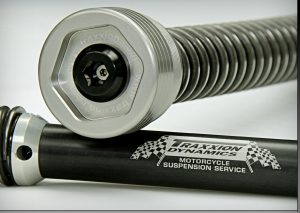
Unfortunately, by the time I got Touratech’s recommended 48 mm of rider sag in the rear, I had used up two-and-a-half more millimetres — 7.5 of the total 15 mm on offer — of that much ballyhooed adjustability. The solution — and it’s my next project soon as I get time — is to remove the shock and screw in seven-and-a-half more millimetres of static preload (five turns of the mechanical preload collar at 1.5 mils per turn) and then bolt the hydraulic adjuster back on. Then the shock will be at zero hydraulic preload and I’ll have all 65 turns of the Typ High End’s adjustability to deal with the wife’s shampoo and multiple skin creams (having given up, as all men eventually do, on trying to convince her that her dermis is not really that dry). Yes, it does mean I’ll have to remove the spring and the hydraulic preload adjuster but at least I will always be able maintain that 48 mm of sag no matter the load.
Even not fully sorted the Touratech shock works pretty darned well. The ride in the rear is, if anything, a little more compliant than the front. The bottoming that bothered She With The Delicate Tush has been completely eliminated. It’s been a little cold to thoroughly test suspension — fork/shock oil, like any lubricant, thickens substantially as it cools — but there’s nothing in the Touratech’s behaviour that a couple of clicks on the high-speed compression setting won’t set right.
Indeed, I thoroughly recommend Touratech’s shocks though the exact version that is best for you depends on what bike you ride and how serious you are about adventuring. For instance, considering how well Touratech calibrates their damping valving, I’m not sure I’d get the High End version for a pseudo soft-roader like a V-Strom. Opting for the more basic Explore model, sans the compression damping adjustability, would save $600 — $1,295 compared with the High End’s $1,895 — and probably wouldn’t affect performance or comfort.
If, however, I rode a serious adventure bike — BMW’s R1200 GS and the Honda Africa Twin come to mind — I would probably opt for the top-of-the-line Extreme shock which has all of the High End’s adjustability but throws in a nifty hydraulic bump stop (instead of the rubber affair on the shaft) for down and dirty off-road work. Additionally, it offers length adjustability so you can alter ride height and steering rake without having to alter the preload. The only fly in the ointment is that the Extreme (upwards of $2,300) is only made for specific bikes, those Touratech deems worthy of its most off-road-ready shock. That limitation aside, the Touratech is a well-designed, incredibly robust premium shock absorber and the ride, even over those aforementioned Quebec potholes, very much improved.
